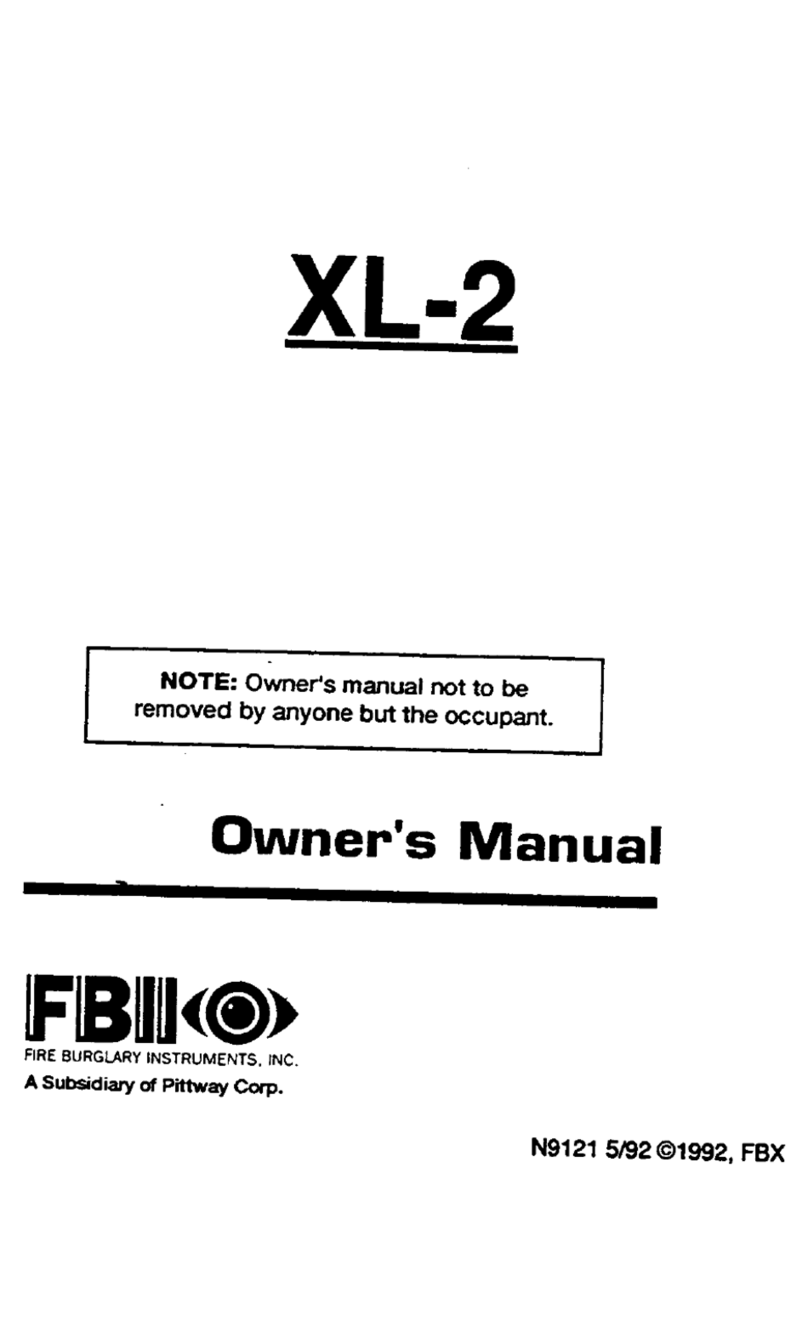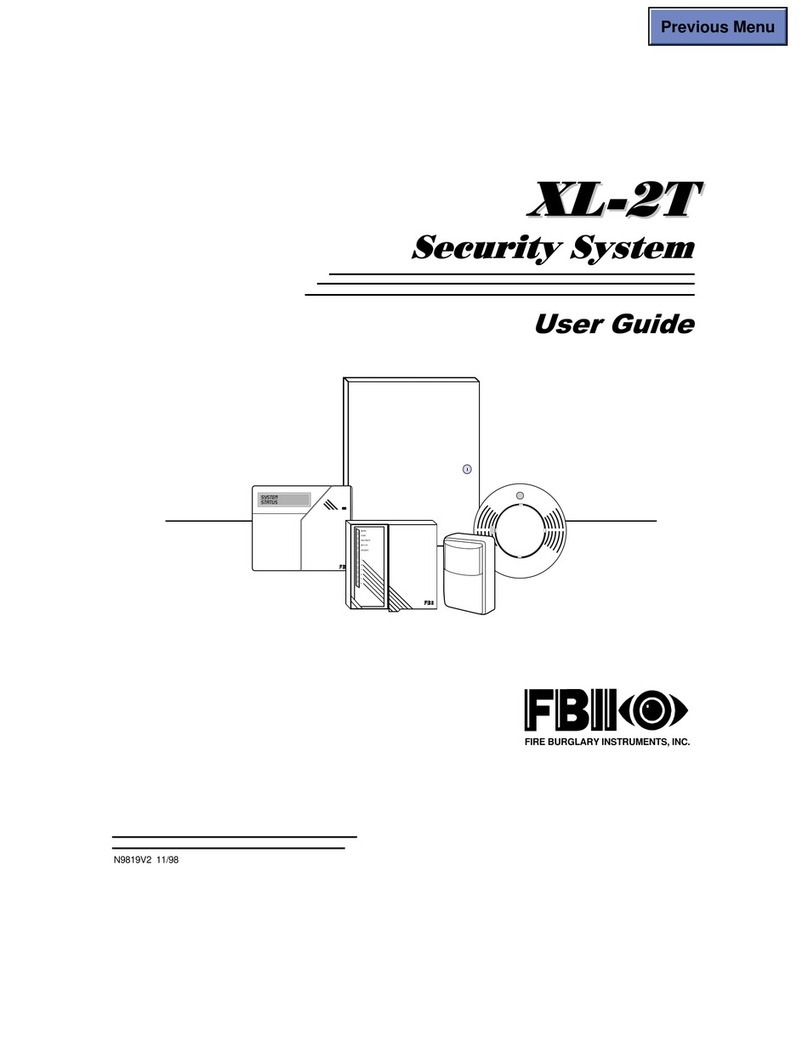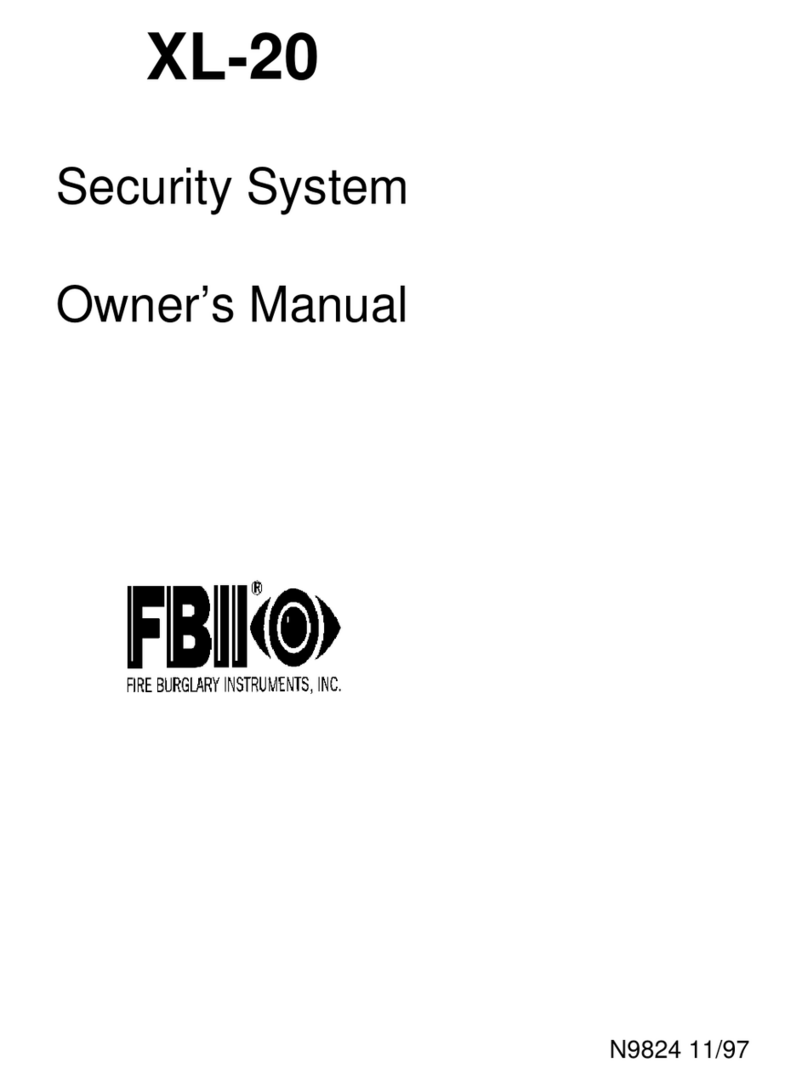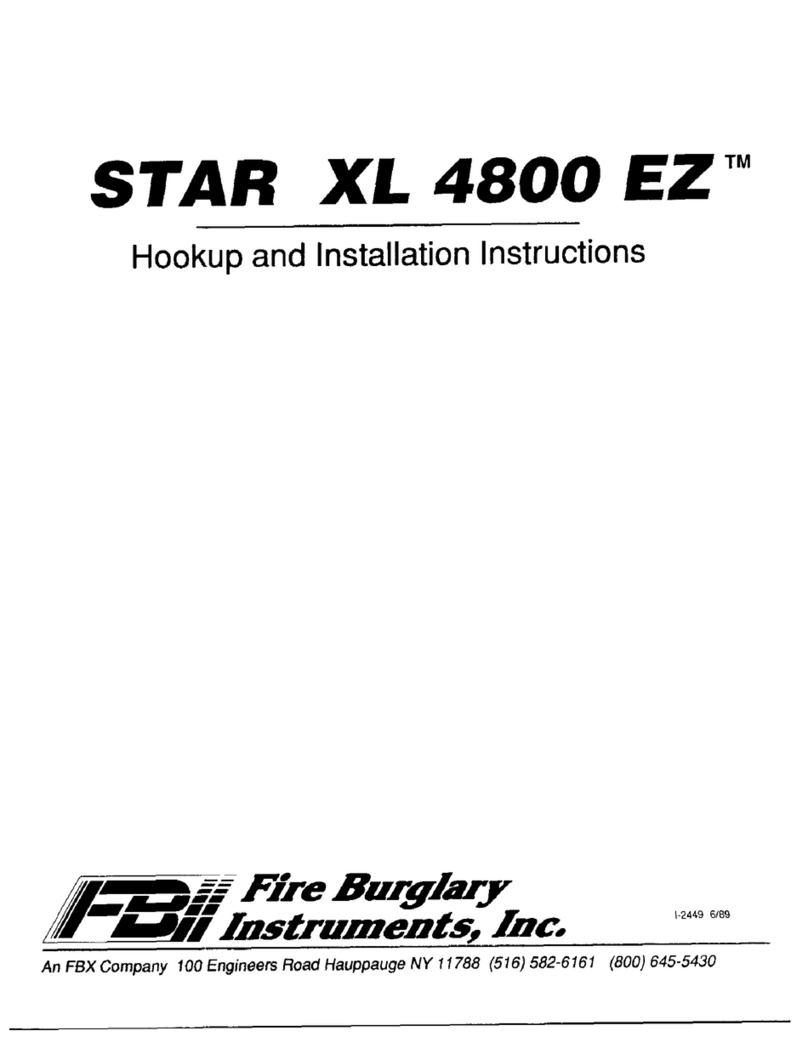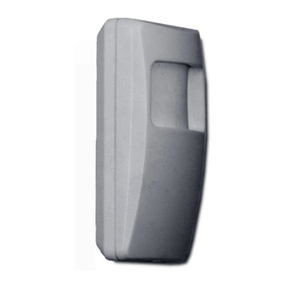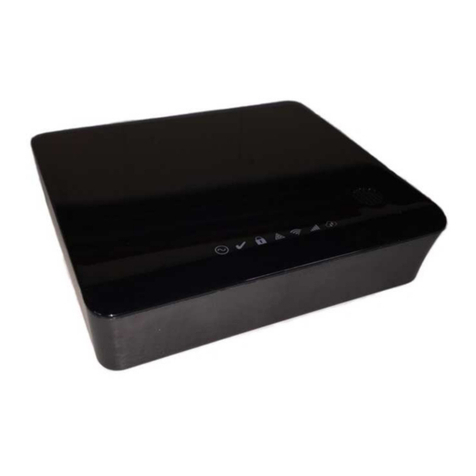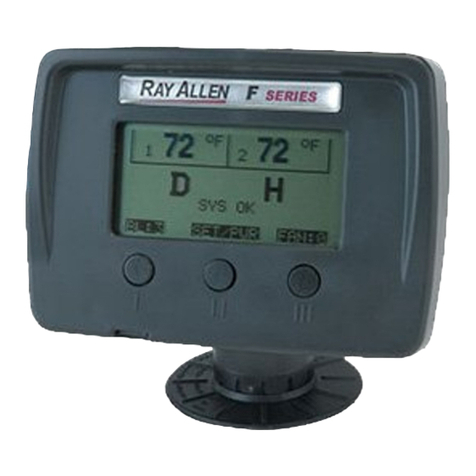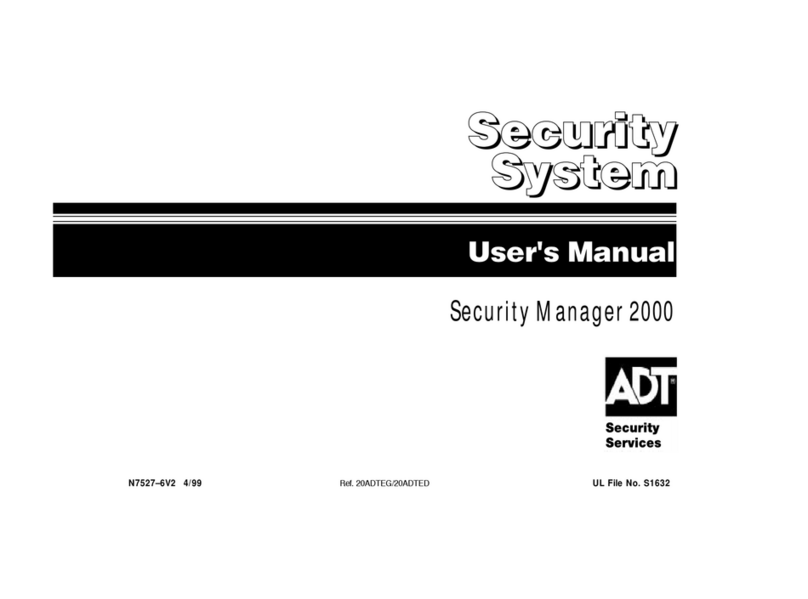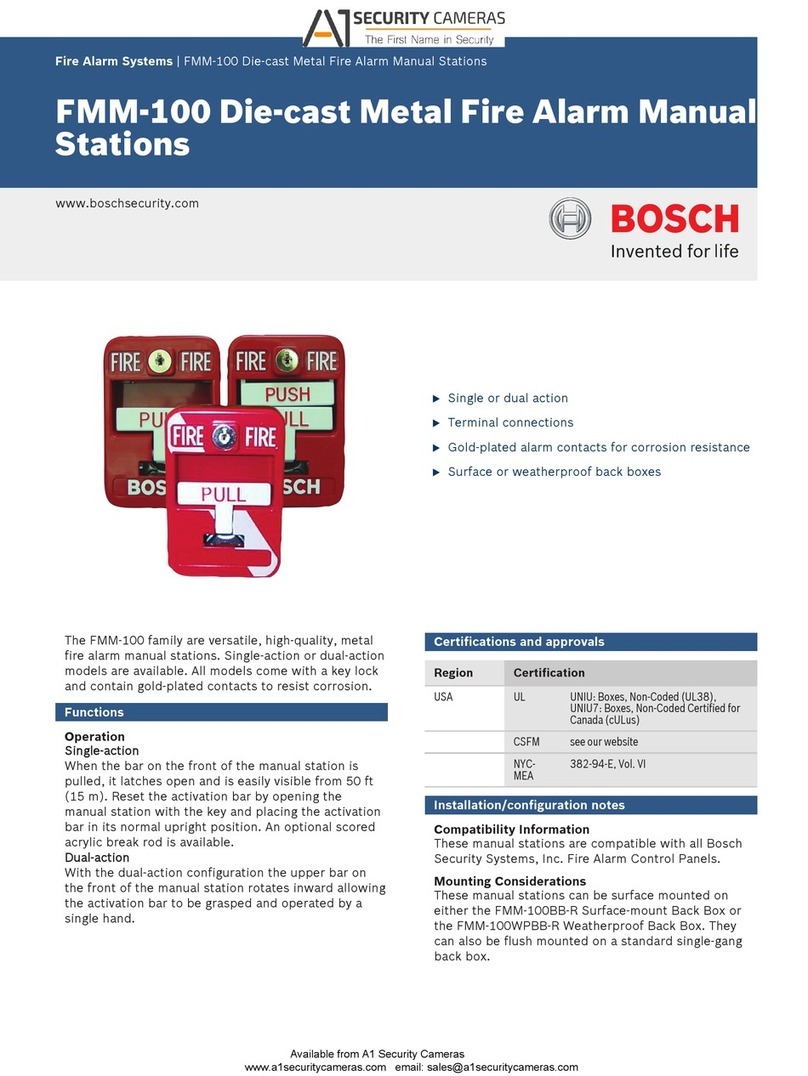FBI XL-1T Assembly instructions

;
;/
/
7
7
6HFXULW\6\VWHP
,QVWDOODWLRQDQG6HW8S*XLGH
N9883 9/98
123
STAY
456
BYPASS
789
INSTANT
*
0#
CODE
ARM
STAY
INSTANT
AC/LB
READY
1
2
3
4
Previous

ii

iii
THANK YOU for your purchase of the FBII
XL-1TURBO.
The purpose of the manual is to present a brief overview of the XL-1T control panel, and provide instructions
for installing a basic system. FBII is always available to serve you. Our sales and Technical Support staff is
available to assist you in any way possible.
FOR
TECHNICAL SUPPORT,
CALL TOLL FREE:
(800) 645-7492
Before you call Technical Support, be sure to:
;
Check the wiring diagram and verify your connections.
;
Check all fuses.
;
Ensure that the transformer and backup battery voltages are supplying the proper voltage levels.
;
Verify your programming information.
;
Read this manual thoroughly.
;
Consult Appendix B: Troubleshooting.
;
Note the proper model number of this product, and the version level (if known), along with any
documentation that came with the product.
;
Have your company name and telephone number ready.
This information will allow us to serve you more quickly and effectively. Please, remember to be patient
while waiting on the telephone; your call will be answered as soon as possible.
For your convenience, a System Planning Worksheet and a Programming Worksheet are included at the
back of this manual. These can be removed to help you record account information.

iv
Table of Contents
••••••••••••••••••••••••••••••••••••••••••••••••••
Table of Contents ................................................................................................................................................ iv
XL-1T to XL-2 Comparison ................................................................................................................................ vi
Conventions Used in This Manual ................................................................................................................viii
SECTION 1 - Introduction...............................................................................................................................1–1
SECTION 2 - Installing The System..............................................................................................................2–1
Mounting the PC Board....................................................................................................................................2–1
Mounting the XK-104 Keypad..........................................................................................................................2–2
Mounting the 6805 Keypad ..............................................................................................................................2–3
SECTION 3 - System Wiring and Hookup....................................................................................................3–1
System Wiring Diagram ...................................................................................................................................3–1
Terminal Connections.......................................................................................................................................3–2
Auxiliary Device Current Draw Worksheet ....................................................................................................3–2
Wiring Information for Keypads and Other Devices ......................................................................................3–2
Keypads and Other Devices..............................................................................................................................3–2
SECTION 4 - Keypad Layout ..........................................................................................................................4–2
Layout of Keypads.............................................................................................................................................4–2
Keypad Sounder................................................................................................................................................4–2
SECTION 5 - System Operation .....................................................................................................................5–2
Power-Up/System Reset....................................................................................................................................5–2
Arming the System............................................................................................................................................5–2
Stay Arming.......................................................................................................................................................5–2
Instant Arming..................................................................................................................................................5–2
Stay/Instant Arming .........................................................................................................................................5–2
Disarming ..........................................................................................................................................................5–2
Reset...................................................................................................................................................................5–2
Bypass................................................................................................................................................................5–2
Auto Unbypass ..................................................................................................................................................5–2
Manual Unbypass .............................................................................................................................................5–2
User Code Programming...................................................................................................................................5–2
User Deletion.....................................................................................................................................................5–2
Keypad Emergency Conditions ........................................................................................................................5–2
Set Time/Date (# 3) ...........................................................................................................................................5–2
Summary of Keypad Functions........................................................................................................................5–2
SECTION 6 - Installer Modes..........................................................................................................................6–2
Entering Installer Mode ...................................................................................................................................6–2
Installer Mode 1 (Installer Keypad Programming).........................................................................................6–2
Installer Mode 1 (System Default)...................................................................................................................6–2
Installer Mode 1 (User Code Default)..............................................................................................................6–2
Installer Mode 2 (System Log View)................................................................................................................6–2
Installer Mode 3 (Unattended Download).......................................................................................................6–2
Installer Mode 4 (Online Download)................................................................................................................6–2
On-Line Download (#9).....................................................................................................................................6–2

v
SECTION 7 - System Programming ..............................................................................................................7–2
General...............................................................................................................................................................7–2
Programming Questions...................................................................................................................................7–2
Zone Programming............................................................................................................................................7–2
SECTION 8 - Data Entry via LED and LCD Keypads...............................................................................8–2
Entering Programming Mode via Either LED or LCD Keypads ...................................................................8–2
What You See on the LED Keypad ..................................................................................................................8–2
What You See on the LCD Keypad ..................................................................................................................8–2
How to Enter Data ............................................................................................................................................8–2
SECTION 9 - System Defaults.........................................................................................................................9–2
APPENDIX A - Central Station Reporting Formats ................................................................................A–2
Standard (3X1) .................................................................................................................................................A–2
4X2.....................................................................................................................................................................A–2
Point ID Reporting Format..............................................................................................................................A–2
APPENDIX B - Troubleshooting...................................................................................................................B–2
APPENDIX C - XL-1T System Planning Worksheet.................................................................................C–2
XL-1T System Programming Worksheet.....................................................................................................C–2
APPENDIX D - Warnings and Limitations.................................................................................................D–2
APPENDIX E - FCC Statement and Telephone Problems......................................................................E–2
APPENDIX F - Warranty................................................................................................................................. F–2
List of Figures
FIGURE 2-1: PC BOARD MOUNTING......................................................................................................................2–1
FIGURE 2-2: MOUNTING THE XK-104 KEYPAD .....................................................................................................2–2
FIGURE 2-3: SURFACE MOUNTING 6805 KEYPAD .................................................................................................2–3
FIGURE 2-4: RECESSED MOUNTING OF THE 6805 KEYPAD...................................................................................2–3
FIGURE 3-1: SUMMARY OF CONNECTIONS.............................................................................................................3–1
FIGURE 4-1: LAYOUT OF XK-104 AND 6805 KEYPADS...........................................................................................4–2
FIGURE 8-1: XK-104 KEYPAD ...............................................................................................................................8–2

vi
XL-1T to XL-2 Comparison
••••••••••••••••••••••••••••••••••••••••••••••••••
The XL-1T is an enhanced version of the XL-2 control panel. Some new features have been added and others
have been modified. The following is a quick comparison.
XL-1T NEW and MODIFIED FEATURES XL-2 SIMILAR FEATURES
Call Waiting /PBX Dialing – 1-digit entry
(program quest. #01 and #02) Multiple digits required
99-Event History Buffer Previous alarm only
Smoke Power or Programmable
Trigger #1 - Output/terminal P1-T1
(program quest. #07)
Smoke power only
Programmable Trigger #2 –
Output/terminal P1-T2 (program quest.
#07)
None
ADEMCO CID Format (Q4 programming) Not supported
CS Test Timer – Select time of day for
system test (program quest. #15) Tests transmitted 24 hours for last signal
Two-Call Downloading None
Cancel Code (program quest. #20)None; Restore Code only
European Ring Detect (program quest.
#05) None
Exit Error Warning (always enabled) None
Bypass in Stay - Any controlled zone can
be bypassed in stay mode (program quests.
#11-14)
Interior zones only bypassed in Stay mode
System Stabilization on Power-Up - To
eliminate motion detector false alarms None
Fast Loop Response (10 msec) Option
by Zone (program quests. #11-14) None
AC (50/60 HZ)-Based System Real-Time
Clock (program quest. #05) Software based system timing
Bell Supervision - New NFPA 72
Requirement (program quest. #14) None
Stay Mode 40-Sec. Dialer Delay w/Bell
and Keypad Sounder Warning for All
Zones (program quest. #05)
Stay mode entry delay w/keypad sounder
warning for exit/entry zones only
LED Zone Display and Keypad
Sounder During Entry (always enabled) Keypad sounder only

XL-1T Installation and Setup Guide
vii
XL-1T FEATURE CHANGES XL-2 SIMILAR FEATURES
5 Zones - 4 programmable and wired panic
or keyswitch zone (program quest. #11-14) 7 zones – 6 programmable and wired Panic
or Keyswitch Zone
System-Wide Restore Code Enable
(program quest. #21) Restore Codes selectable by each zone
System-wide 15-sec. Dialer Delay for
Controlled Zones (program quest. #07) 15-sec. dialer delay selectable by each zone
User 5 – Arm-only user capability removed User 5 – Arm-only user optional
Ring Count Options - 0, 4, 8, 12 (program
quest. #07) Ring count options: 0 - 15
Quick Commands (Quick Arm, Quick
Forced Arm, and Quick Bypass)
capability removed
Quick Arm and Quick Forced Arm/Quick
Bypass programmable
= Reset (✱key) Always Enabled for
Fire Alarms Only Reset (✱key) programmable for both
burglar and fire alarms
LCD Keypad Descriptors NOT
Programmable (Default = Zone 1, Zone 2,
etc.)
LCD keypad descriptors programmable
CS Reporting Formats (Ext. and
Partial Ext.) Capability Removed CS reporting formats (ext. and partial ext.)
programmable
CS Test Keypad Ringback Always
Silent CS test keypad ringback always audible

viii
Conventions Used in This Manual
••••••••••••••••••••••••••••••••••••••••••••••••••
Before using this manual, it is important to understand the meaning of the following symbols (icons).
ULThese notes include specific information that must be followed if installing this system for a UL
Listed application.
These notes include information that the user should be aware of before continuing with the
installation, and which, if not observed, could result in operational difficulties.
This symbol indicates a critical note that could seriously affect the operation of the system, or
could cause damage to the system. Please read each warning carefully. This symbol also
denotes warnings about physical harm to the user
.

1–1
SECTION 1
Introduction
••••••••••••••••••••••••••••••••••••••••••••••••••
The XL-1T Security System is a state-of-the-art, microprocessor-based control/communicator.
Programming can be performed through any of the compatible keypads; or the system can be
uploaded and downloaded remotely using the EZ-Mate PC downloader software. In addition,
remote control actions (e.g., arming, disarming, bypassing) can be performed by the software.
Programming options are stored in nonvolatile, reprogrammable EEPROM memory, and
that programmed information will not be lost in the event of a complete loss of power. Other
features of the XL-1T include:
•5 zones (4 fully programmable plus a wired panic zone or keyswitch zone)
•2 types of compatible keypads (LCD and LED four-wire devices; up to four per system)
•Supports ADEMCO Point ID format
•6 User Codes with capability for Ambush Code
•History event buffer stores the last 99 events
•Fast Loop Response (10mSec) selectable by zone
•NFPA 72 Bell Supervision
•CS test timer offset
•English readout keypads available
•Upload/download with remote commands with answering machine bypass
•Default Lockout option to prevent hostile account takeovers
•Indications on keypad for AC loss, low battery, and communication failure
•Central station reporting for alarms, troubles, restores, bypasses, openings, closings,
ambush, panic, 24-hr. test, cancels, AC loss, and low battery
•Can be programmed as a local system (no CS reporting)
•4-wire smoke detectors with fire verification logic plus smoke power reset
•Exit error warning
•European ring detect
•2 programmable trigger outputs for various functions (including armed/ready indication
and glass-break detector reset)
•Input power: 12VAC 20VA; 12VDC, 4 - 7 AH
•Output power: 11.5 - 13.1VDC, 500mA
•Bell output power: 10 - 15.5VDC, 1A.

XL-1T Installation and Setup Guide
1–2

2–1
SECTION 2
Installing The System
••••••••••••••••••••••••••••••••••••••••••••••••••
Mounting the PC Board
Before mounting the printed circuit board, be certain that the appropriate metal knockouts
have been removed. Do not attempt to remove the knockouts after the circuit board
has been installed.
1. Hang the three mounting clips on the raised cabinet tabs. Observe proper clip orientation
to avoid damage to the clip when mounting screws are tightened and to avoid problems
with insertion and removal of the PC board.
2. Insert the top of the circuit board into the slots at the top of the cabinet. Make sure that
the board rests in the slots as indicated in the diagram shown below.
3. Swing the base of the board onto the mounting clips.
4. Place the provided washer over the wire jumpers located in the middle of the PC board.
Secure the PC board to the middle mounting clip of the enclosure through the washer
using the screw provided.
5. Secure the remaining sides of the PC board to the enclosure using the screws provided.
PC Board
KNOCKOUT
DETAIL SIDE VIEW
OF BOARD INSERTED
INTO SLOTS
DETAIL SIDE VIEW
OF CLIP AND BOARD
INSTALLED
B
A
DETAIL SIDE VIEW
OF CLIP INSTALLATION:
A. CABINET TAB
WITHOUT CLIP
B. CABINET TAB
WITH HANGING
CLIP
Metal Cabinet
3rd CLIP
REQUIRED
Figure 2-1: PC Board Mounting

XL-1T Installation and Setup Guide
2–2
The front face of the enclosure can be completely removed to gain unrestricted access to the
control panel during installation.
•Open the enclosure to its fully extended position (approx. 90 degrees)
•Lift the control panel door and remove the door from the enclosure.
Mounting the XK-104 Keypad
The XK-104 Keypad may be surface-mounted in the following ways:
A. Directly to a control panel having a keypad cutout on the front of its enclosure.
B. Directly to a single- or double-gang electrical junction box.
C. Directly to a wall or other surface.
Procedure for Mounting the XK-104 Keypad:
1. Remove the keypad cover assembly from the rear
mounting plate. Insert a small screwdriver blade in the
Cover Pry-Off Slots at the lower edge of the keypad (see
Diagram 1) and twist to pry off the cover assembly.
2. Mount the rear plate (see Diagram 2).
NOTE: The plate is correctly oriented when its part
number, molded into the plastic, is upright.
A. Mounting Directly to Control Panel Enclosure:
If the control panel has a keypad cutout on the front
face of its enclosure, remove the cutout and mount the
plate to the enclosure's face via holes "A" (see
Diagram 2) and the four screws and nuts provided.
B. Mounting Directly to an Electrical Junction
Box:
The plate can be mounted directly to a single- or
double-gang electrical junction box. Use the screw
holes provided and holes "B" for a single gang-box; or
holes "A" for a double-gang box.
C. Mounting Directly to a Wall or Other Surface:
Make a wiring hole in the mounting surface. Position
the plate's wiring opening over the mounting surface
hole. Mount the plate, using holes "A" and/or "B" in
conjunction with appropriate mounting hardware (not
provided) for the type of surface.
3. Complete the keypad wiring as required for the control
with which the keypad is to be used.
4. Replace the keypad cover assembly on the rear plate.
Starting at the upper edge of the plate, engage the two
holding hooks (see diagram 3) into the recesses provided
for them inside the upper edge of the cover assembly, and
snap the lower edge of the cover assembly onto the two
snap hooks at the lower edge of the plate.
Figure 2-2: Mounting the XK-104 Keypad
If desired, cover and plate can be further secured together by inserting a screw (provided) into the
slot at the keypad's lower edge.
COVER DOOR
BREAK-AWAY RIBS (4)
(FOR EXPOSED WIRING ENTRY.)
SLOT FOR COVER SECURING SCREW
(OPTIONAL)
COVER PRY-OFF SLOTS (2)
(TO REMOVE COVER, INSERT SMALL
SCREWDRIVER BLADE AND TWIST.)
REAR PLATE
Diagram 1: BOTTOM VIEW OF KEYPAD
BREAK-AWAY RIBS (4)
(FOR EXPOSED WIRING ENTRY.)
WIRING OPENING
(FOR CONCEALED
WIRING ENTRY.)
ABA
ABA
N6054
POST FOR COVER
SECURING SCREW (OPTIONAL)
SNAP HOOKS (2)
(FOR HOLDING COVER'S
LOWER EDGE)
HOLES "A" OR "B"
(CAN BE USED FOR
WALL MOUNTING)
HOLES "A" (4)
(FOR MOUNTING TO
CONTROL PANEL'S
ENCLOSURE OR
TWO GANG
ELECTRICAL BOX)
HOLES "B" (2)
(FOR MOUNTING TO
SINGLE GANG
ELECTRICAL BOX)
HOLDING HOOKS
(FOR HOLDING COVERS UPPER EDGE)
Diagram 2: REAR MOUNTING PLATE

Section 2 – Installing the System
2–3
When surface-mounting the keypad and using screws with heads larger than the screws provided
with the unit, place electrical tape over the screws to prevent them from interfering with the keypad
operation. In the future, the back plate of the keypad will provide additional countersinking for
screws with larger heads.
Mounting the 6805 Keypad
Keypads can be surface mounted or flush mounted as described below.
SURFACE MOUNTING 1. Select a mounting location and place the rear plate of the
keypad on the wall. Mark the location of the cutout for the
keypad wiring cable.
2. Create a keypad opening. Connect the keypad wiring to the
control panel with a 4-wire connector.
3. Place the keypad wiring through the cutout and secure the
back plate to the wall (refer to Figure 2-3).
4. Connect the keypad wiring connector to the keypad and
place the keypad on the mounting plate attached to the
wall.
5. Secure the keypad to the rear mounting plate by attaching
the provided 5/8-inch screw in the lower hole, located
behind the keypad door.
Figure 2-3: Surface Mounting the 6805 Keypad
RECESSED MOUNTING 1. Select a mounting location. For recessed mounting, this
must be between two studs. The rear mounting plate is not
used for recessed installations.
2. Create an opening in the wall exactly 4 inches high by 5
13/16 inches wide.
3. Turn over the keypad and remove the Phillips-head screw
(item 1 in Figure 2-4) in the upper left-hand side of the
keypad printed circuit board.
NOTE: This screw is located immediately to the left of the
keypad connector.
4. Attach the black metal mounting strap to the rear of the
keypad as follows (refer to Figure 2-4);
•Face the pointed end of the mounting strap facing the
keypad front. This will be used to latch onto the inside of
the wall.
•Place the small white plastic spacer under the mounting
strap. Secure the mounting strap to location 1 using the
5/8-inch Phillips head screw (supplied) and the plastic
spacer.
•Secure the other end of the strap to the white plastic
opening, location 2, using the Phillips-head screw
removed in step 3.
Figure 2-4: Recessed Mounting of
the 6805 Keypad
5 13/16,,
4 ,,
(
15 cm
)
(
10 cm
)
2 1
3

XL-1T Installation and Setup Guide
2–4
5. Connect the white plastic tab into the round opening immediately behind the keypad
door. Place the longer Phillips-head screw (included) through the opening inside the
keypad door and begin to tighten the screw. Tighten the screw and leave the tab in a
down position.
6. Run the keypad wiring to the control panel and attach the wiring to the keypad.
7. Place the keypad into the wall opening, leading with the side containing the black metal
strap, until it grabs the inside of the wall.
8. After inserting the side of the keypad with the metal strap, insert the other side into the
opening until the entire keypad is firmly in the wall.
9. Tighten the screw inserted in step 5.
After mounting the 6805 LCD Keypad at eye level, the display intensity level can be adjusted to
suit the user by adjusting the intensity control located behind the keypad door.

3–1
WARNING: To prevent risk from
electrical shock, de-energize the
system control unit and disconnect
the telephone lines before servicing
this unit.
CONTROL PANEL
POWER
DETAIL A
12 13
1 2 3 4
ZONE
SMOKE DETECTOR
9.5 - 12.2VDC
LISTED
HOUSEHOLD
THERMOSTAT
ESL 104
MODEL ESL2048
EOL RELAY
RED
BLACK
BROWN
BROWN
2.2k EOL RESISTOR
UL LISTED
SMOKE
DETECTOR
MODEL
ESL445AT
UL INSTALLATIONS REQUIRE LISTED
END-OF-LINE DEVICE. USE RESISTOR
FROM EOL22 KIT. LOOK FOR LISTING
MARK ON ITEM.
WARNING:
THIS UNIT INCLUDES AN ALARM VERIFICATION
FEATURE THAT WILL RESULT IN A DELAY OF THE
SYSTEM ALARM SIGNAL FROM THE INDICATED
CIRCUITS. THE TOTAL DELAY (CONTROL UNIT
PLUS SMOKE DETECTOR) SHALL NOT EXCEED
60 SECONDS. NO OTHER INITIATING DEVICES
SHALL BE CONNECTED TO THESE CIRCUITS
UNLESS APPROVED BY THE LOCAL AUTHORITY
HAVING JURISDICTION.
CIRCUIT CONTROL UNIT SMOKE DETECTOR
(ZONE) DELAY-SEC MODEL DELAY-SEC
_______ _____20______ ______ __________
PRODUCT COVERED UNDER
US PATENT #4,791,658
XL-1T NOTES:
1. Connect to a grounded metal waterpipe (16ga. at 15 ft.)
2. Total AUX. power available (including keypad power) is 500mA max.
(300mA max. for UL installations). Used for connection of devices rated
from 11.5 to 13.1VDC.
3. System must be tested on a weekly basis. For information, refer to manual.
4. Do notconnect the transformer to a switch controlled receptacle.
Power varies with transformer (SEE NOTE 2).
5. Installation of equipment andwiring methods are requiredto be in accordance
with theNational Electrical code and ANSI/NFPA No. 72.
6. Battery capacity for Emergency Standby is a minimum of 4 hours.
Undernormal conditions this battery will last 3 years. Use only exact
replacements.
7. Maximum of 4 keypads. Available keypads include: XK-104 and 6805.
8. Limited energy cable must be used.
9. Non-replaceable fuse (F3). Return to manufacturer if blown. Donot solder in field.
10. Maximum forUL installations: Entry Delay, 45 sec.; Exit Delay, 60 sec.
11. For connection of VS-299 Siren Driver. Constant positive (+)unregulated output.
12. The PANIC or KEYSWITCH connected to terminals 5 & 7 is to be no more than 3 ft.
fromthe control unit with no barriers in between.
13. Programmable trigger outputs. If used for smoke detector power reset
see Detail A. See manual for programming information.
Use model XL-2GTC trigger cable.
SYSTEM DEFAULT RESET JUMPERS
TRANSFORMER
12VAC, 20VA
(Connect to 24 HR.
120VAC, 60 Hz Outlet
SEE NOTE 4)
+
-
SIREN
-
+
+_
_
+
SMOKE
DETECTOR
POWER
(9.5-12.2VDC,
50mA max.)
BELL
2216 17 18 19 20 219 10 11 12 13 14 15
CONSTANT DC POWER (+)
10-15.5VDC
(SEE NOTE 11)
KEYPAD
(SEE NOTE 7)
BLACK
YELLOW
GREEN
RED
FIRE & BURGLARY
ALARM OUTPUT
(11.5-13.1VDC,
1A max.)
HOME
TELCO
BROWN
GRAY HOME
GREEN
RED TELCO
AUX POWER
12VDC Reg., 500mA max.
(SEE NOTE 2)
+
_
PANIC
2.2K
2.2K
4
3
2
1
EARTH GND.
(SEE NOTE 1)
5
6
7
8
2.2K
2.2K
ZONE 1
ZONE 2
ZONE 3
ZONE 4
JP1 JP2
To re-load factory default values, remove all power
(AC & DC). Short JP1 to JP2. With short still applied,
re-apply power (AC then DC), wait 5 seconds, then
remove short with power still applied.
ZONE
1
2
3
4
PANIC
(+)
1
3
4
6
7
(-)
2
2
5
5
5
TERMINALS
CONNNECTIONS FOR HOUSEHOLD FIRE/BURGLAR ALARM SYSTEM
P1
VBELL
T1
T2
+
BLACK
RED
12V, 4-6AH
BATTERY
MODEL 1240A
(SEE NOTE 6)
_
TRIGGER
OUTPUTS
(SEE NOTE 13)
Aux. Power
Bell Power
F3
Battery
4 Amps
This fuse is
NOT replaceable.
(SEE NOTE 9)
F1
F2
3 Amps
1 Amp
MODEL 368 CORD
TO RJ31X OR
CA31A JACK
FCC Registration Number AE398E-69554 AL-E Ringer Equivalence 0.0B
References: Hookup and Installation Instructions N9983 and Owner’s Manual N9884 LOAD NO.: 7
SECTION 3
System Wiring and Hookup
••••••••••••••••••••••••••••••••••••••••••••••••••
System Wiring Diagram
Figure 3-1: Summary of Connections
SYSTEM STABILIZATION MODE: Upon initial power-up of the system, all of the lights on the LED
keypad(s) will blink ON and go OFF for approximately 2 min. 10 seconds; and/or the LCD keypad(s) will
display STAND BY! for approximately 2 min. 10 seconds. This occurs on a total power-up (if armed or
disarmed in its prior state) or after a system reset. If the total system power is lost upon power
restoration, the system will return to the previous arming state. The 2 min. 10 sec. interval is used to
allow motion detectors (interior zones) to stabilize on power-up in order to prevent false alarms. This
option can be disabled by momentarily (5-second minimum) putting a jumper between terminals 13 and
12.

XL-1T Installation and Setup Guide
3–2
Terminal Connections
TERMINALS DESCRIPTION
1(+) and 2(-) Zone 1 (Requires 2.2K EOL resistor) [Default = DELAY]
3(+) and 2(-) Zone 2 (Requires 2.2K EOL resistor) [Default = INTERIOR]
4(+) and 5(-) Zone 3 (Requires 2.2K EOL resistor) [Default = PERIMETER]
6(+) and 5(-) Zone 4 (Requires 2.2K EOL resistor) [Default = PERIMETER]
ZONE INFORMATION:
Normally closed devices may be wired in series and/or normally open
devices in parallel with the 2.2k ohm end-of-line resistor on all zones
(Refer to Figure 3-1: Summary of Connections). The standard loop
response time is 280mS on all zones. Each zone can be programmed for
Fast Response, 10mS (see questions #11-14). The factory default values
for each zone are listed in the table above; however; any zone can be
programmed for the following types: delay, perimeter, interior, fire, 24-hr.
alarm, or 24-hr. trouble. Further explanation of the zone types can be
found in Section 7: System Programming.
Loop response is defined as the minimum time required for a fault to trip a zone.
5 and 7 PANIC CIRCUIT OR KEYSWITCH:
This hardwired panic is a 24-hour zone that can be programmed for silent
or audible operation. The normally open panic circuit will activate with
each violation; therefore; a latched device is not recommended. A
momentary device is recommended. For UL installations, the panic
switch connected to these terminals should be located no more than three
feet from the control unit with no intervening barriers (this is a
supervision requirement only). If the Keyswitch option is selected (refer
to programming question #05, location 2), each activation of the
keyswitch will arm or disarm the system.
An EOL resistor is not required on this zone and is not supervised. This zone does not report
Restore Codes. If a supervised zone with restore reporting ability is desired, program one of the
four zones as a 24-hr. alarm. If the zone is used as a keyswitch, triggers are available for either an
arming or ready status indication (see programming question #07, location 4).
8 EARTH GROUND:
Connect this grounding lug to a cold water pipe utilizing #18AWG wire at
a distance of no greater than 15 ft. Use a noncorrosive metal strap firmly
secured to the pipe to which the lead is electrically connected and
secured. If the premises’ pipes terminate in PVC, this terminal must be
connected to a six-foot grounding rod.

Section 2 - System Wiring and Hookup
3–3
9, 10, 11, and 12 KEYPADS:
A maximum of four keypads, either XK-104 or 6805, may be wired to
these terminals. The connections are as follows; 9 (BLACK = negative),
10 (YELLOW = data in), 11 (GREEN = data out), and 12 (RED = positive
power). Each keypad draws approximately 30mA. The maximum keypad
length is 500 feet using 22-gauge wire.
In some installations, it may be necessary to use shielded wire to prevent radio frequency
interference.
9 (-) and 12 (+) REGULATED POWER (11.5 - 13.1VDC):
The total regulated output power for motion detectors and other external
devices is 500mA at 11.8 - 12.5V for residential applications, or 12.0 -
12.5V for commercial applications, with less than 100mVPP ripple. The
total regulated output capacity of the XL-1T includes the power available
from these terminals (9 and 12) as well as the power used by the keypads
and smoke detectors. Therefore, to determine the total power available
from these terminals, subtract the power consumed by the keypads and
smoke detectors. Refer to the Auxiliary Device Current Draw Worksheet
in this section.
12 (+) and 13 (-) SMOKE DETECTOR POWER OR TRIGGER #1 OUTPUT:
The system will accept 9.5 - 12VDC 4-wire smoke detectors only.
Approximately 50mA of current is available at these terminals for
powering all detectors and an EOL relay model ESL2048. For UL
installations, refer to Figure 3-1: Summary of Connections for hookup.
Trigger #1 must be selected for smoke detector power (see program question #07, location 3).
These terminals adhere to the fire verification and reset logic, which is
explained in Zone Types in Section 7: System Programming. Manual
reset of smoke detector power can be accomplished by entering a valid
User Code after clearing the alarm memory or by using the [✱] key.
14, 15, 16, and 17 TELEPHONE LINE:
Connect the model 368 cord as follows: 14 (GREEN = Telco Tip), 15 (RED
= Telco Ring), 16 (BROWN = Home Tip), 17 (GRAY = Home Ring). Insert
the plug into a USOCRJ31X Jack (or a CA31A Jack for Canadian
installations).
The FCC registration number is AE398E-69554 AL-E, and the ringer
equivalence is (0.0B). The system should not be connected to party lines
or coin operated phones.
If this control panel will be used for uploading, downloading, or remote command applications, the
telephone line connected to the control panel must not be shared with a fax machine or modem.
Furthermore, this device should not be connected to a phone line that has Call Waiting, unless
the Call Waiting Interrupt numbers are programmed into the panel dialing sequence.

XL-1T Installation and Setup Guide
3–4
18(+) CONSTANT DC POWER:
The terminal delivers constant unregulated 10.0-15.5VDC power for
devices requiring a constant power such as the VS279. It is connected to a
bell fuse (F3).
Constant power for these devices can also be obtained by splicing the RED (+) battery lead with
an in-line fuse of 3 amps.
19(+) and 20(-) BELL OUTPUT:
The total output power available for sounding devices is 1 amp at 10.5 -
15.5VDC for residential applications, or 12.0 - 14.4VDC for commercial
installations (750mA for UL installations). These terminals will deliver
constant output on Burglary, Audible Panic, and Bell Test. A pulsed
output will be generated on a fire condition. There are separate bell cutoff
times programmable for burglary and fire conditions within the
programming sequence. For UL Household Fire Warning System
installations, mount the speaker indoors for best audibility. Also, for UL
installations, only one speaker should be used.
Before connecting sounding devices, please consult their specifications for proper current draw.
Otherwise, the bell fuse (F3) may be blown. An option exists to supervise the bell output terminals
if zone 4 is programmed as a fire zone (see program questions #11-14). P1-VBELL (+) and P1-T1
(-) or terminals 12 and 13 can be used for a trigger #1 output. See programming question #07,
location 3 for valid trigger types.
In order to connect devices to the triggers, use connector XL-2GTC (trigger cable). Unless
otherwise specified, the trigger output is normally floating and actively sinks on activation
(switched negative).
NFPA 72 REQUIREMENT: All the
interconnecting pathways (cable, wire,
etc.) between the alarm system initiating
device (control panel) and the signaling
device (bell, speaker, siren, etc.) shall
be monitored for an occurrence of an
open circuit, which prevents the normal
operation of the system. An occurrence
of an open circuit shall be indicated by a
distinctive trouble signal.
BELL SUPERVISION (Mechanical Bell) - To meet the NFPA 72
requirement, program zone 4 as a fire zone (program question #14,
locations 1 and 2). The bell is supervised for an open circuit (not a
short circuit) across the bell output terminals. The keypad will indicate
that a fire trouble condition has occurred, and fire trouble is reported to
the CS (if enabled in program question #20, location 3). If the bell is
already ringing, the supervision will not take effect until after bell cutoff
time.
Mechanical Bell
22
(
+
)
23
(
-
)
Bell Out
p
ut

Section 2 - System Wiring and Hookup
3–5
SIREN SUPERVISION (Self-Contained Siren/Speaker)
To meet the NFPA 72 requirement, program zone 4 as a fire zone
(program question #14, location 1). The siren is supervised for an
open circuit (not a short circuit) across the bell output terminals. The
keypad will indicate that a fire trouble condition has occurred and fire
trouble is reported to the CS (if enabled in program question #20, location
3). If the siren is already sounding, the supervision will not take effect
until after bell cutoff time.
Use FBII models ZR-815C, ZR-815EC, or ZR-830EC. See the diagram
below:
Self Contained Siren/S
p
eaker
22
(
+
)
23
(
-
)
Bell Out
p
ut
SPEAKER SUPERVISION (VS-299 Siren/Driver)
To supervise a speaker connected to the VS-299 Siren Driver, connect
terminal 1 of the VS-299 to the positive terminal of any zone programmed
as a 24-hour trouble zone (program questions #11 - 14, locations 1 and 2).
The speaker is supervised for an open circuit across the speaker
terminals (4 and 5) of the VS-299, and a code is reported to the CS if
enabled (program questions #11 - 17, locations 3 and 4). The connection
between the bell output terminals and the VS-299 Siren Driver may be
supervised by programming zone 4 as a fire zone (program question #14,
locations 1 and 2), and connecting a 10K Ohm, 1/4W resistor across the
bell output terminals to prevent a continuous supervisory condition. See
the diagram below:
VS-299
Siren Driver
8 Ohm S
p
eaker
5
4
2
7
22
(
+
)
23
(
-
)
Bell Out
p
ut
24 Hour Trouble Zone
1
Positive
(
+
)
10 K
Prevents Continuous Supervisory Condition

XL-1T Installation and Setup Guide
3–6
SPEAKER SUPERVISION (679S Siren/Driver)
To supervise a speaker connected to the 679S Siren Driver, connect a
5.6K Ohm resistor between terminal 5 of the 679S and terminal 6 (+) of
zone 4 programmed as a fire zone (program question #14, locations 1 and
2). Replace the 2.2K Ohm EOL resistor on zone 4 with a 5.6K Ohm
resistor. Supervise the speaker for an open circuit (not a short circuit)
across the speaker terminals (4 and 5) of the 679S. Also supervise the
connection between the bell output terminals and the 679S Siren Driver.
If a supervisory occurs, the keypad will indicate that a fire trouble
condition has occurred on zone 4, and fire trouble is reported to the CS, if
enabled (program question #20, location 3). If the siren is already
sounding, the supervision will not take effect until after bell cutoff time.
See the diagram below:
9
(
+
)
8
(
-
)
679S Siren Driver
Zone 6 Pro
g
rammed
as Fire Zone 5.6K EOL
8 Ohm S
p
eaker
5.6K EOL
Additional
Resitor
5
4
1 or 3
2
Smoke
Detector
Re
p
lace 2.2K EOL w/5.6K
22
(
+
)
23
(
-
)
Bell Out
p
ut
21 and 22 TRANSFORMER:
Connect the 12VAC 20VA transformer, utilizing 18AWG wire at a
distance not to exceed 15 feet from the panel, to an unswitched 120VAC
outlet.
Do not use any other transformer as this may result in improper
operation or damage to the unit.
The AC/LOW BAT LED on the keypad will remain ON while AC power is
present. If an AC loss occurs, the AC/LOW BAT LED will turn off
immediately. If AC remains OFF for 15 minutes, the system will pulse
the keypad buzzer and transmit to the central station, if programmed.
The keypad buzzer can be silenced by entry of any valid User Code. When
AC restores, the AC/LOW BAT LED will light immediately, and a Restore
Code will be reported, if programmed.
BACKUP BATTERY:
The RED (+) and BLACK (-) flying leads must be connected to a 12VDC,
4-6AH gel cell to serve as backup power in the event of AC loss.
A battery test occurs approximately every 4.5 minutes. Low battery
condition occurs at nominal 11VDC. The keypad AC/LOW BAT LED and
buzzer will pulse slowly when a low-battery condition is detected. The
system reports this condition to the CS, if programmed. Battery
restoration will occur within 4.5 minutes at the next battery test. The
buzzer may be silenced by entry of any valid User Code.
Table of contents
Other FBI Security System manuals
Popular Security System manuals by other brands
Klaxon
Klaxon Nexus AC Sounder & Sounder-Beacon installation instructions
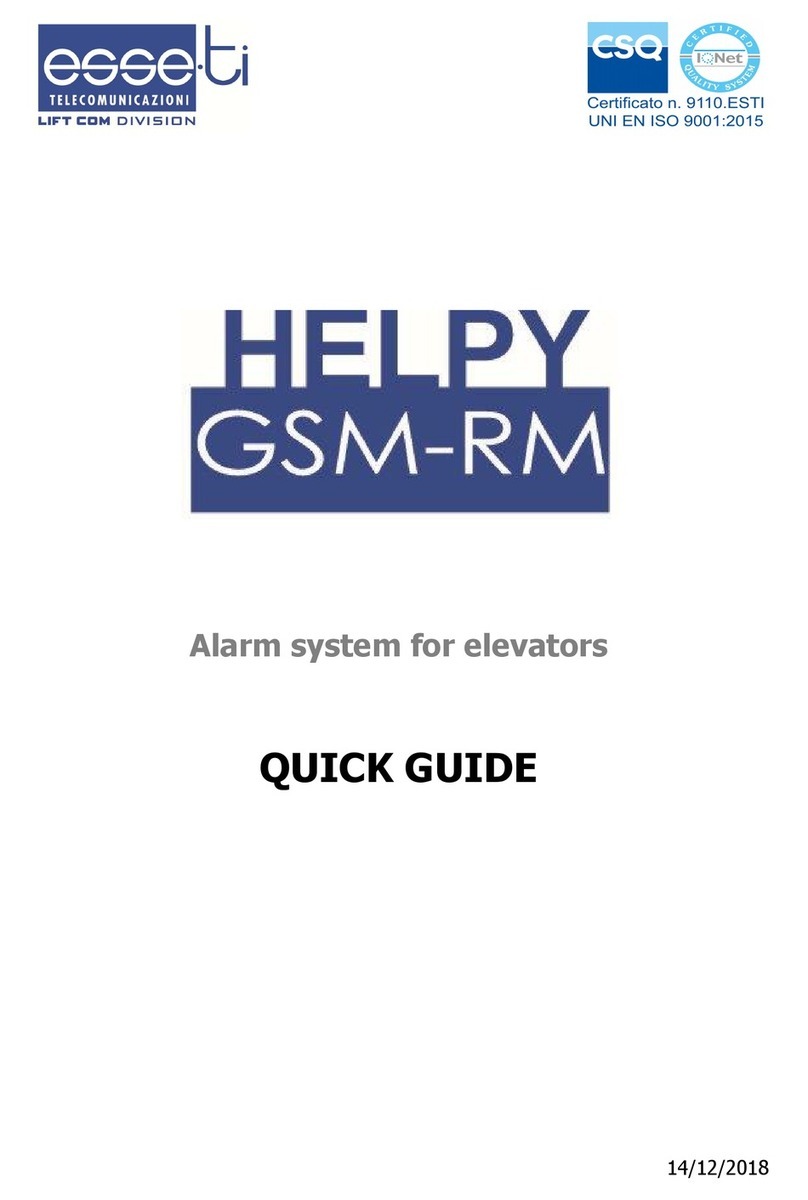
Esse-ti
Esse-ti Helpy GSM-RM quick guide
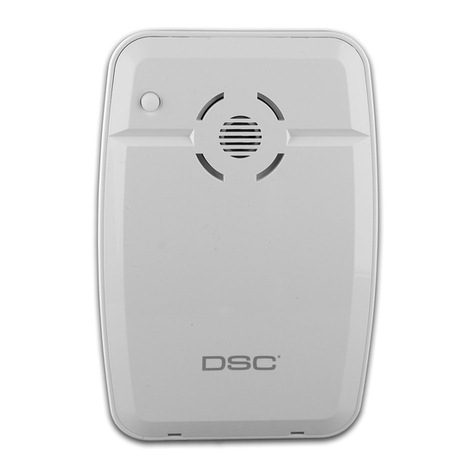
DSC
DSC Impassa WT4901 installation instructions
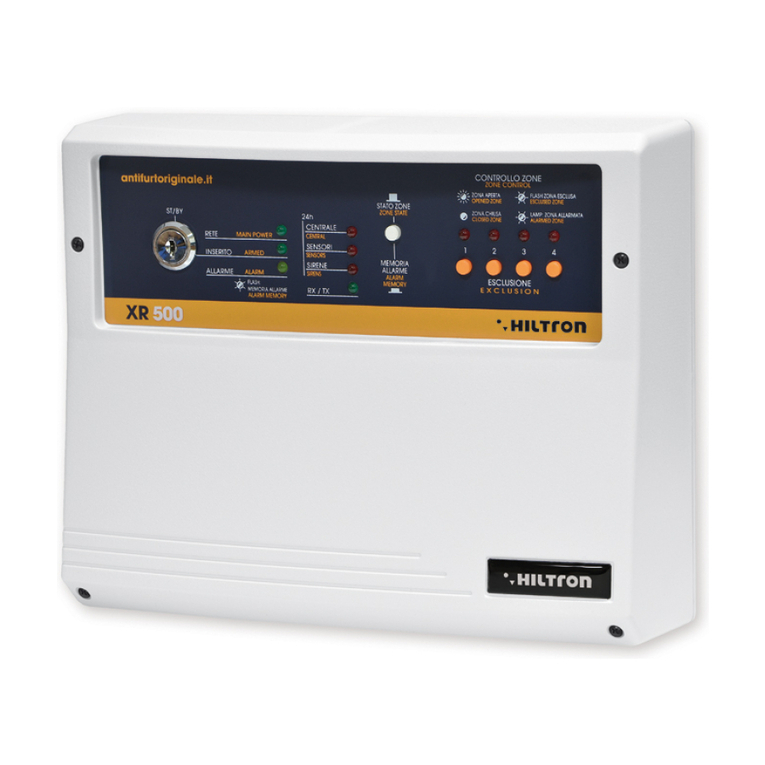
Hiltron security
Hiltron security XR500 user manual
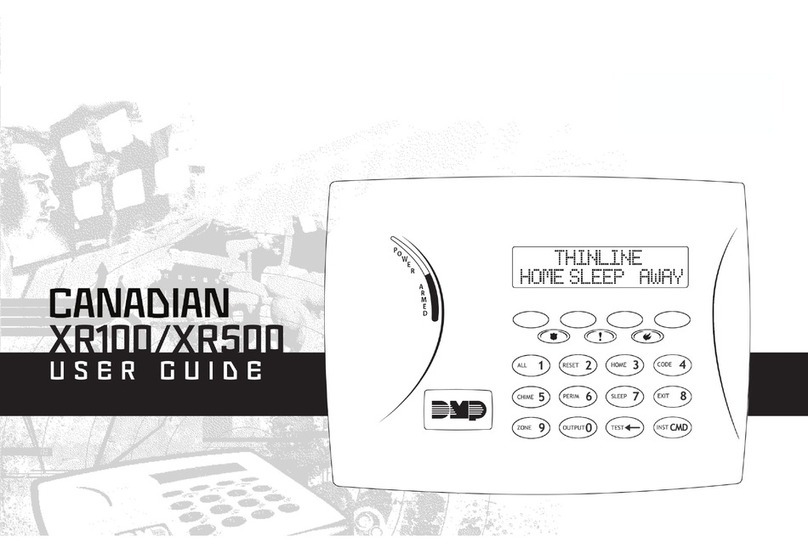
Digital Monitoring Products
Digital Monitoring Products Canadian XR100 user guide
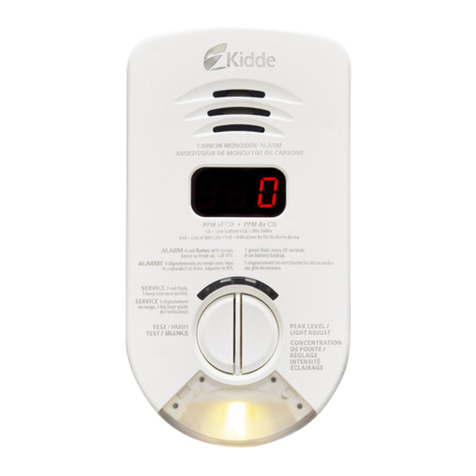
Kidde
Kidde KN-COP-DP-10YHCA (900-0284CA) user guide
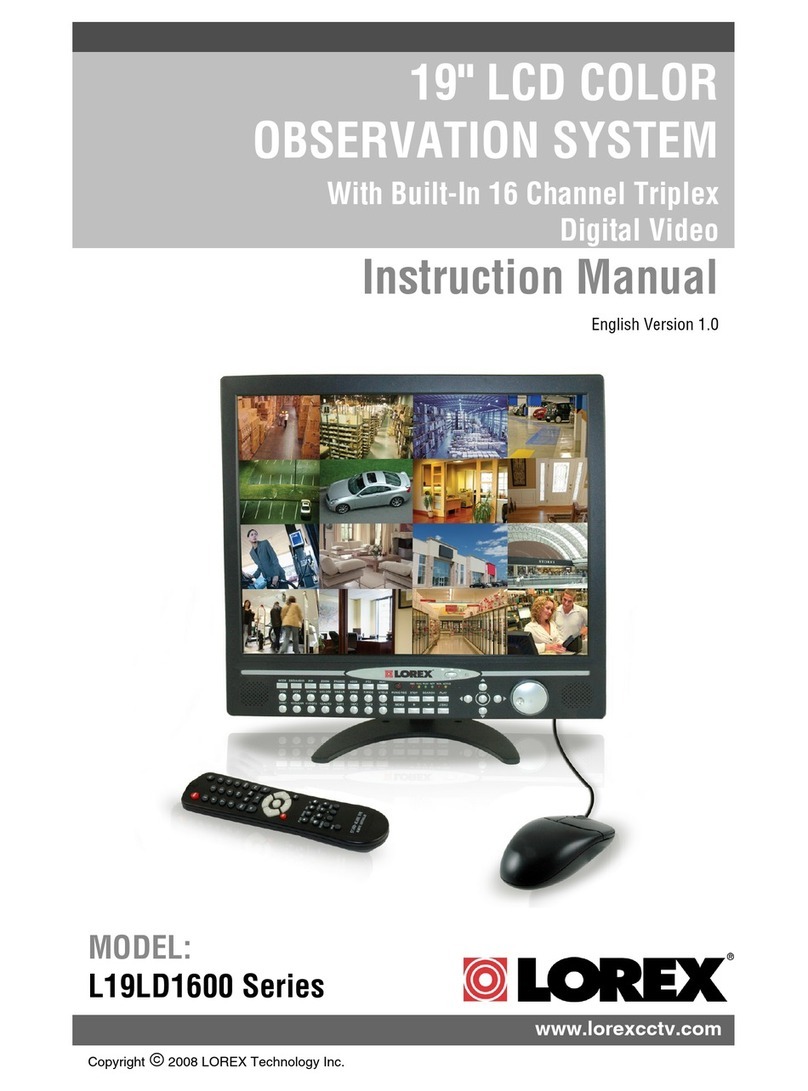
Lorex
Lorex L19LD1600 Series instruction manual
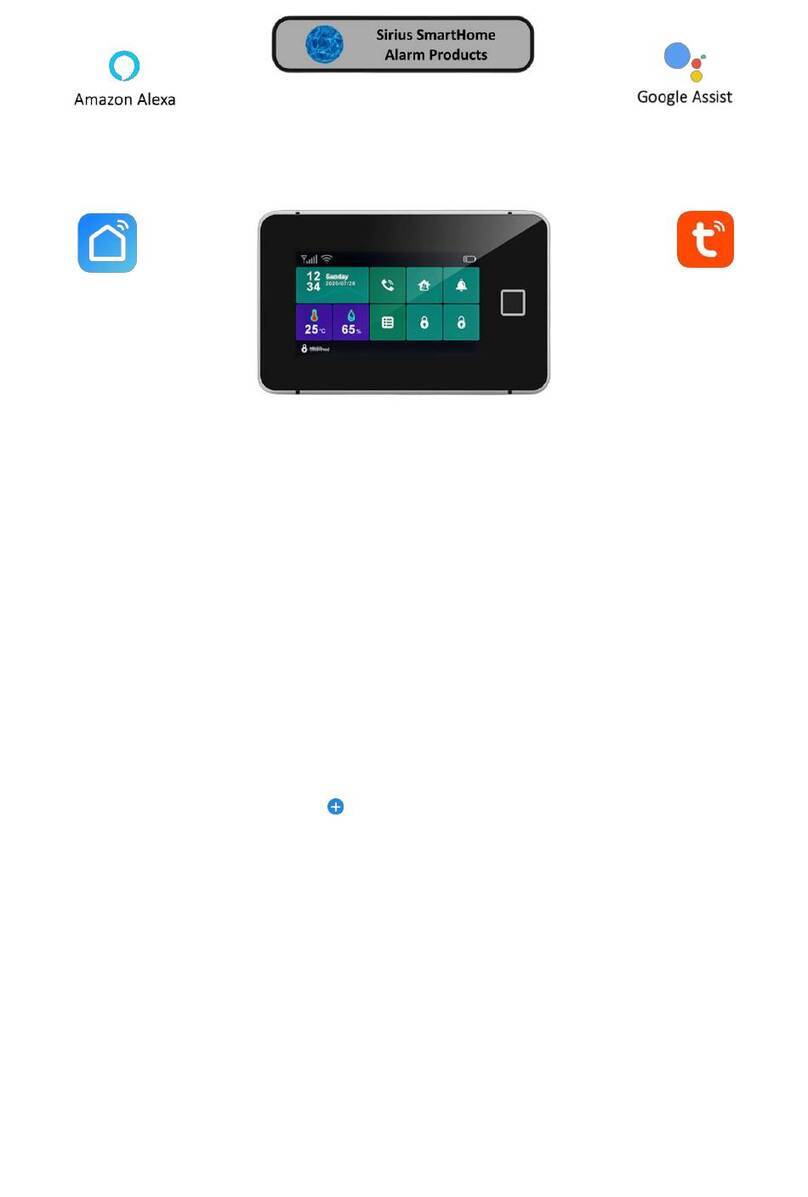
Sirius Satellite Radio
Sirius Satellite Radio Smart Alarm AW-200 quick guide
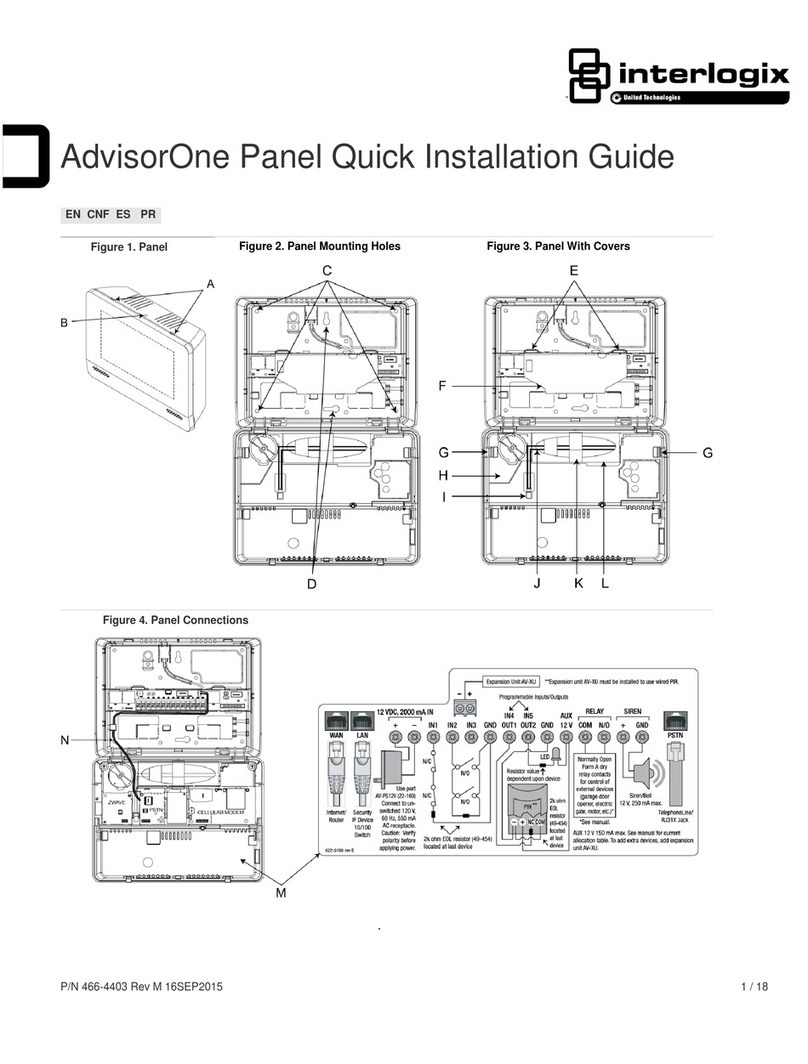
Interlogix
Interlogix advisorone Quick installation guide
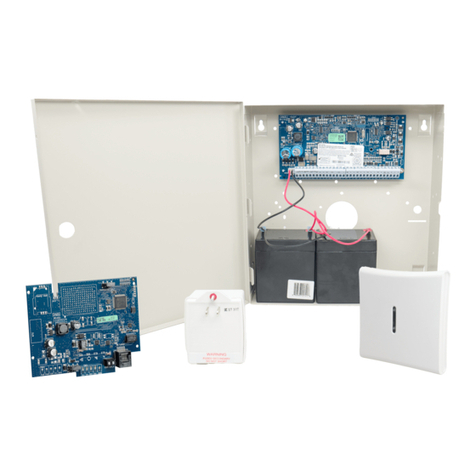
DSC
DSC neo HS2016 user guide
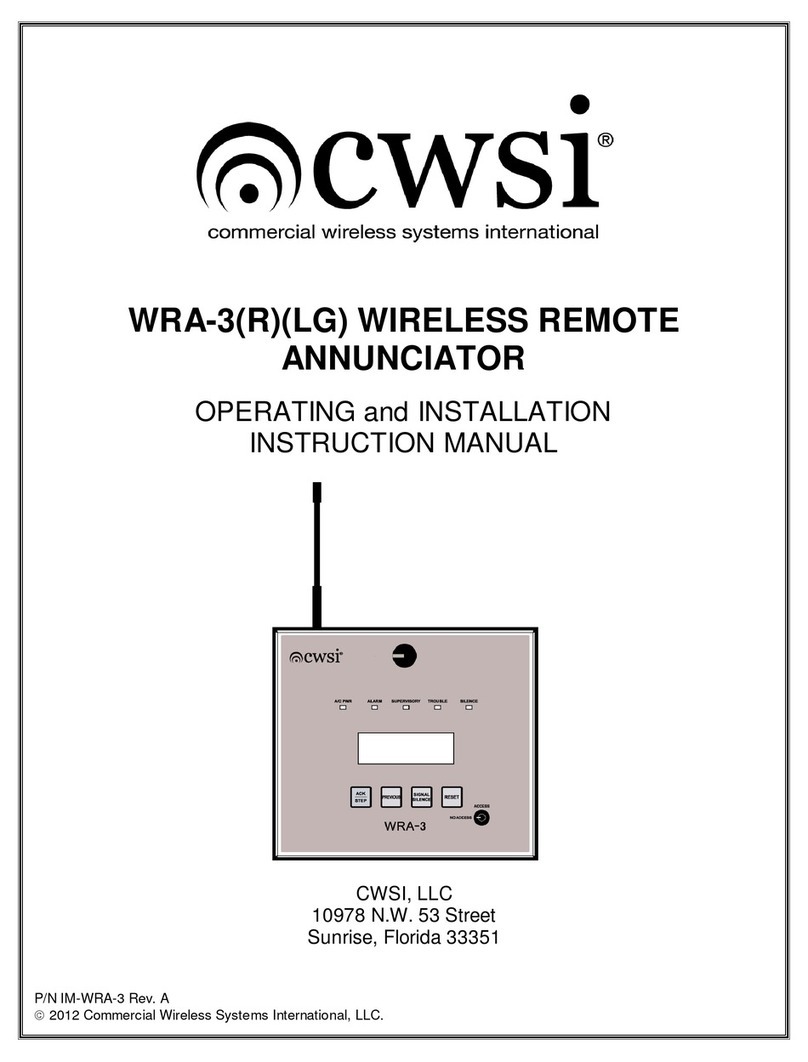
CWSI
CWSI WRA-3 Operating and installation instruction manual
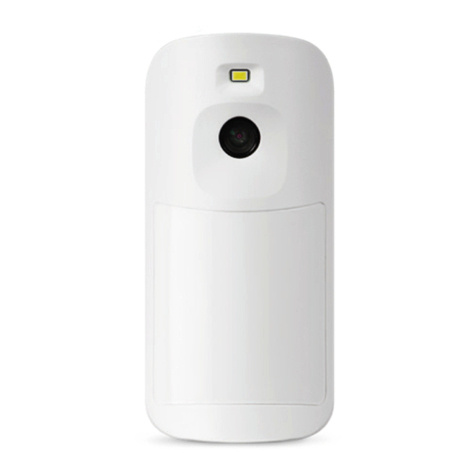
Sector Alarm
Sector Alarm PhoneWatch TC user manual

